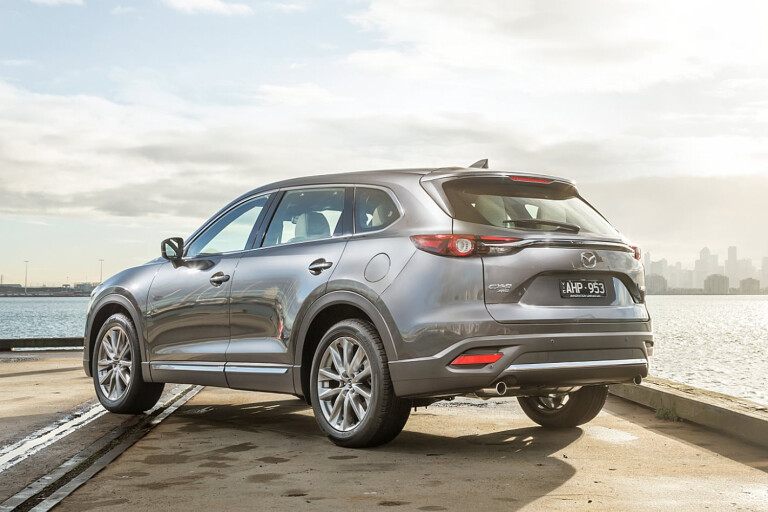
TELL ME ABOUT THIS CAR
This is the second-generation Mazda CX-9 seven-seater SUV. It arrives almost ten years after the first CX-9, and is now wholly revised from top to toe; cheaper, lighter, thriftier, and available in a broader range than before. Mazda has sought to create a good-looking family hauler that uses less fuel and is quieter inside.

STRENGTHS
- First of all, the new CX-9 looks great inside and out. It shakes off the drab reputation of the segment and pushes into genuinely attractive territory. Most of its competitors stick to basic functionality and forget about showroom sizzle. Mazda has raised the bar for this end of the large SUV market, and bridged the gap to more premium offerings like the Volvo XC90 and Audi Q7.
- Its brand new 170kW/420Nm engine is a winner. It is the first to combine Mazda’s fuel efficient SkyActiv technology with a turbocharger, making it far less thirsty than the old CX-9 (8.4-8.8L/100km vs 11.0-11.3L/100km) and still able to deliver strong pulling power from low down in the rev range. It’s effective and well-suited to the application.
- Mazda now offers the CX-9 in four model grades, which is one more than before. Every model can be optioned with all-wheel-drive, meaning the cheapest CX-9 that drives all four wheels is now a full $10,000 cheaper than a first-gen CX-9 with AWD. The starting price for a base model CX-9 is cheaper now, as well.

- Engineers from Mazda in Japan travelled to Australia to observe the way families used their old CX-9s. Information from those visits has made the new car better. It is full of smart packaging ideas like storage pockets and bag hooks, and one-touch third row seats that are a cinch to raise and lower.
- A concerted effort into lowering tyre and wind noise inside the CX-9’s cabin has succeeding in making it much quieter and more relaxing to drive. There’s extra sound absorbing material under the carpet and cleverly designed door seals that will keep the peace on long journeys.
- Safety is a major strong suit. Every variant of CX-9 gets six airbags; blind spot monitoring; auto braking; brake-force distribution and cross-traffic alert. The top spec Azami model adds lane departure warning and lane keep assist. CX-9 version has been awarded a five star ANCAP rating.

WEAKNESSES
- The CX-9 is a brilliant car overall, though not without its flaws. The brakes could use more initial bite at the top of the pedal travel. Slowing to a complete stop requires significantly more input on the brake pedal than you first expect, and takes some getting used to.
- Steering is quite weighty and can feel fussy when making sharp turns or quickly changing direction. It maintains Mazda’s direct feel but it doesn’t allow the CX-9 to disguise its large size and mass.
- When accelerating quickly and using the engine’s full rev range it has a harshness to its sound that can be quite intrusive. Thankfully, having the full force of engine torque available from a lowly 2000rpm means you rarely need to string it out to the redline.

ANY RIVALS I SHOULD CONSIDER?
The Kia Sorento won the last Wheels seven-seater SUV comparison test before the CX-9 was released. It earned victory on the strength of its dynamic ability, attractive looks, interior ambiance and equipment level. Mazda CX-9 has these aspects covered, but the Kia offers a diesel engine option, which the CX-9 does not. Toyota’s Kluger is the current sales leader in the segment. It’s roomy and highly practical, though its 3.5-litre V6 is thirstier. It’s also much less inspiring to look at whether viewed from the inside or outside.
COMMENTS